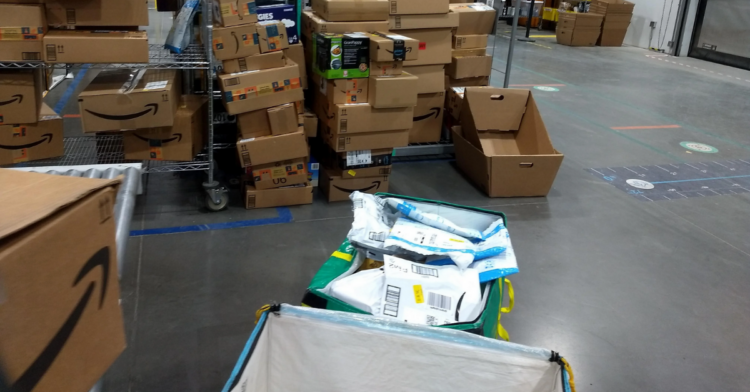Judging by the public’s sudden increased need for it and the staggering profits that followed, one would expect that Amazon was one of the entities that actually thrived when the pandemic emerged.
After all, its founder Jeff Bezos found himself $65.1 billion richer by March of 2021 and according to Business Insider , Amazon hired at least 350,000 workers between July and October of last year.
But a recent report from The New York Times suggests that underneath all that apparent success is lurking a developing problem for the company.
Because it’s one thing to hire hundreds of thousands of people, but it’s quite another to actually keep them.
Even before the pandemic, Amazon struggled to keep workers interested in coming back.

As The New York Times reported , the company has had a yearly turnover rate of 150% for hourly employees, suggesting a loss of about 3% of these workers every week.
Part of this has to with the thorough ways in which employees are tracked as the system keeps track of not only how fast fulfillment center employees can pack merchandise but also how long they pause, creating a culture where workers fear they’ll be fired if they stop moving. And when something goes wrong, this same tracking system generally assumes the workers are at fault.
As one New York employee wrote on a local feedback board, “It is very important that area managers understand that associates are more than just numbers. We are human beings. We are not tools used to make their daily/weekly goals and rates.”
But while some of this alienation could be attributed to how Amazon’s size makes it overly reliant on automated systems, it’s also showing cracks in Bezos’ original management philosophy.
As former Amazon vice president David Niekerk told The New York Times , Bezos was clear from the beginning that he didn’t want an entrenched workforce for the company’s more low-skilled jobs as he considered such a model a “march to mediocrity.”
Instead, he figured that those doing these jobs would work on a short-term basis. This led to an intentionally low chance of advancement for these workers as only 220 people at a 5,000-employee strong fulfillment center ever received a promotion. For comparison’s sake, Walmart’s advancement rate from hourly employees to managers is more than double that.
As 31-year-old Derrick Palmer told The New York Times , “If we go beyond the requirements, there’s no reward.”
And the resulting frustration and turnover born from this system only seemed to get worse during the pandemic.

Although Amazon relaxed some of its policies on low output-based firings and offered unlimited unpaid time off and flexible personal leave, these were either not communicated or soon contradicted by the company’s management system. Amazon was also not forthcoming about COVID-19 infections within its workforce, leading employees to fear for their safety.
For instance, soon after the unpaid time off announcement was made, employees found themselves on the hook for mandatory overtime. And the personal leave didn’t turn out to be as flexible as expected because the system processing these requests jammed up, leading to a flurry of job abandonment notices that left employees scrambling to save their livelihoods.
Between the inadvertent firings that came from this glitch and the new issues that compounded the pre-existing ones, many of those 350,000 hires we discussed earlier dwindled, with many of these new employees leaving after weeks or even days on the job.
As a result, Amazon now has a turnover rate that doubles that of the retail and logistics industries.

And while it’s on track to become America’s largest private employer with over a million employees, Amazon’s executives are now paradoxically worried that the company may eventually see the day where it runs out of people to hire.
As Seattle data science team leader Paul Stroup said, Amazon’s policy for hourly workers leads to its need to replace most of its workforce once or twice a year, which means that between 8 to 100 million people need to apply every year for this model to continue as-is.
Considering that this amounts to 5% of America’s workforce, it doesn’t seem like a model that can last forever.
h/t: The New York Times
















































